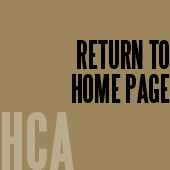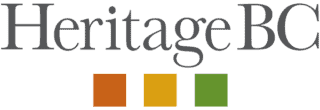- Heritage 101
- Advocacy
- Accessibility for Historic Places
- Climate & Sustainability
- Cultural Maps
- Heritage Place Conservation
- Heritage Policy & Legislation
- Homeowners
- Intangible Cultural Heritage
- Reconciliation
- Indigenous Cultural Heritage
- Setting the Bar: A Reconciliation Guide for Heritage
- 1. Heritage and Reconciliation Pledge
- 2. Acknowledging Land and People
- 3. Celebrating Days of Recognition and Commemoration
- 4. With a Commitment to Learn
- 5. Committing to Strategic Organizational Diversity
- 6. Mission-Making Room for Reconciliation
- 7. Possession, Interpretation, Repatriation and Cultural Care
- 8. Shared Decision Making
- 9. Statements of Significance and other heritage planning documents
- 10. Heritage Conservation Tools, Local Government Act
- Racism: Do Not Let the Forgetting Prevail
- Taking Action: resources for diversity and inclusion
- Webinars On-Demand
Heritage Conservation Areas: Sample Maintenance Standards Bylaw
 With minor alterations, this sample bylaw was prepared by Lidstone, Young, Anderson for Heritage Conservation: A Technical Manual for Local Governments, 1995.)
With minor alterations, this sample bylaw was prepared by Lidstone, Young, Anderson for Heritage Conservation: A Technical Manual for Local Governments, 1995.)
The Council of the District of _____, in open meeting assembled, enacts as follows:
Title
1. This Bylaw may be cited as “District of _____ Heritage Standards and Maintenance Bylaw No._____”
General Requirements
2. The following standards apply to protected heritage property designed under the Local Government Act [RSBC 2015] Chapter 1, Part 15 — Heritage Conservation, Division 5 — Continuing Protection: Heritage site maintenance standards.
a. no owner of protected heritage property shall permit any building structure or land comprising the heritage property to fall into a state of disrepair which may result in the deterioration of any exterior or interior feature or appurtenance that would alter or detract or tend to alter or detract from the heritage value or heritage character of the building or structure or land and in the case of a heritage conservation area the heritage conservation area as a whole, including but not limited to:
i. deterioration of exterior walls or other vertical supports;
ii. deterioration of roofs or other horizontal members;
iii. deterioration of chimneys or other stone, brick or masonry works;
iv. deterioration of plaster and mortar;
v. ineffective waterproofing of exterior walls, roofs and foundations including all glass, glazing, windows and doors;
vi. deterioration of any heritage characteristic or other feature having heritage value so as to create or permit the creation of any hazardous or unsafe or unsightly condition;
vii. the deterioration of landscaping features having heritage value by failure to cultivate, care for and maintain grass, plants, trees and shrubs in a neat and tidy condition in accordance with good horticultural practice.
b. Without limiting the generality of S. 2(a) hereof, each owner and occupant shall keep all exterior components of every building and structure in good repair, including but not limited to, walls, roofs, chimneys, cornices, gutters, downspouts, drains, porches, steps, landings, fire escapes, exterior stairs, windows, shutters, doors, storefronts, signs, marquees and awnings and in addition:
i. all surfaces shall be covered with a protective coating, such as paint or other material which preserve the structure and does not contribute to deterioration.
ii. all surfaces shall be maintained free of deterioration, including but not limited to, broken glass, lose or missing shingles or siding. crumbling brick. stone and mortar, and peeling, scaling or deteriorated paint.
iii. overhanging structures including canopies, marquees, signs, awnings, exterior stairways, fire escapes, and other structures with overhanging extensions shall be maintained in good repair, be securely anchored to the structure, and be protected from rust and other signs of decay by application of a weather protective material such as paint. Nonoperative or broken electrical signs shall be repaired or removed. All obsolete signs and sign structures shall be removed.
c. each accessory structure shall be subject to the maintenance standards set forth above;
d. all premises and landscaped elements shall be maintained in a safe and sanitary condition, including ‘ but not limited to steps, walks, driveways, fences, retaining walls, trees, shrubs, and weeds. If any such area or object constitutes a danger to health or safety, it shall be repaired, replaced or removed and without limitation:
i. all paved driveways and walks shall be maintained in safe condition;
ii. all fences, retaining walls or similar structures shall be firmly anchored in the ground and maintained in good structural repair. Wooden elements or other elements subject to deterioration from weathering shall be maintained with chemicals or paint to preserve the element and to retard deterioration;
iii. weeds and grass shall be kept trimmed and from becoming overgrown;
iv. all years, courts or los shall be kept free of accumulations of trash, garbage waste, rubbish, refuse, junk, and other noxious or offensive materials or substances which may cause a fire hazard or may act as a breeding place for vermin or insects;
v. all portions of all premises shall be graded so that there is no pooling of water or recurrent entrance of water into any basement or cellar.
Conservation Area Maintenance Requirements
3. Attached hereto and forming part of this Bylaw as Schedules “A”, “B” and “C” are additional standards of maintenance that apply to protected heritage property within Conservation Areas I, II, and III respectively. Without limiting the general application of S. 2 of this Bylaw, each owner of buildings, structures or land to which either Schedule “A”, “B” and “C” applies shall also maintain the protected heritage property in accordance and in compliance with the standards therein set out.
Duty to Maintain
4. No Owner of protected heritage property shall fail to comply with the requirements and standards provided in this Bylaw and every Owner shall maintain protected heritage property in accordance with and to standards required.
Offence
5. a) Every person who violates any of the provisions of this Bylaw or who omits to do or refrains from doing anything required to be done by any of the provisions of this Bylaw or who suffers or permits any act to be done in contravention hereof is guilty of an offence and is liable of an offence and is liable to the penalties imposed in this Bylaw.
b) Each day that an offence continues shall be deemed to be a separate offence.
Penalty
6. Every person who commits an offence against this Bylaw is liable to a fine and penalty up to $10,000.00 for each offense.
Schedules
7. Schedule “A”, “B” and “C” form part of this Bylaw.
(Signatures)
SCHEDULE “A”
Conservation Area I
Heritage Standards of Maintenance
1. Conservation Area I means that heritage conservation area defined and delineated as Conservation Area I in the District of _____ Official Community Plan Bylaw ______.
2. The following requirements apply to the maintenance, repair and replacement of roofs, roof coverings and roof membranes in respect of:
a. Resident dwellings listed as protected heritage property in Conservation Area I
b.
c.
SCHEDULE “B”
SCHEDULE “C”
